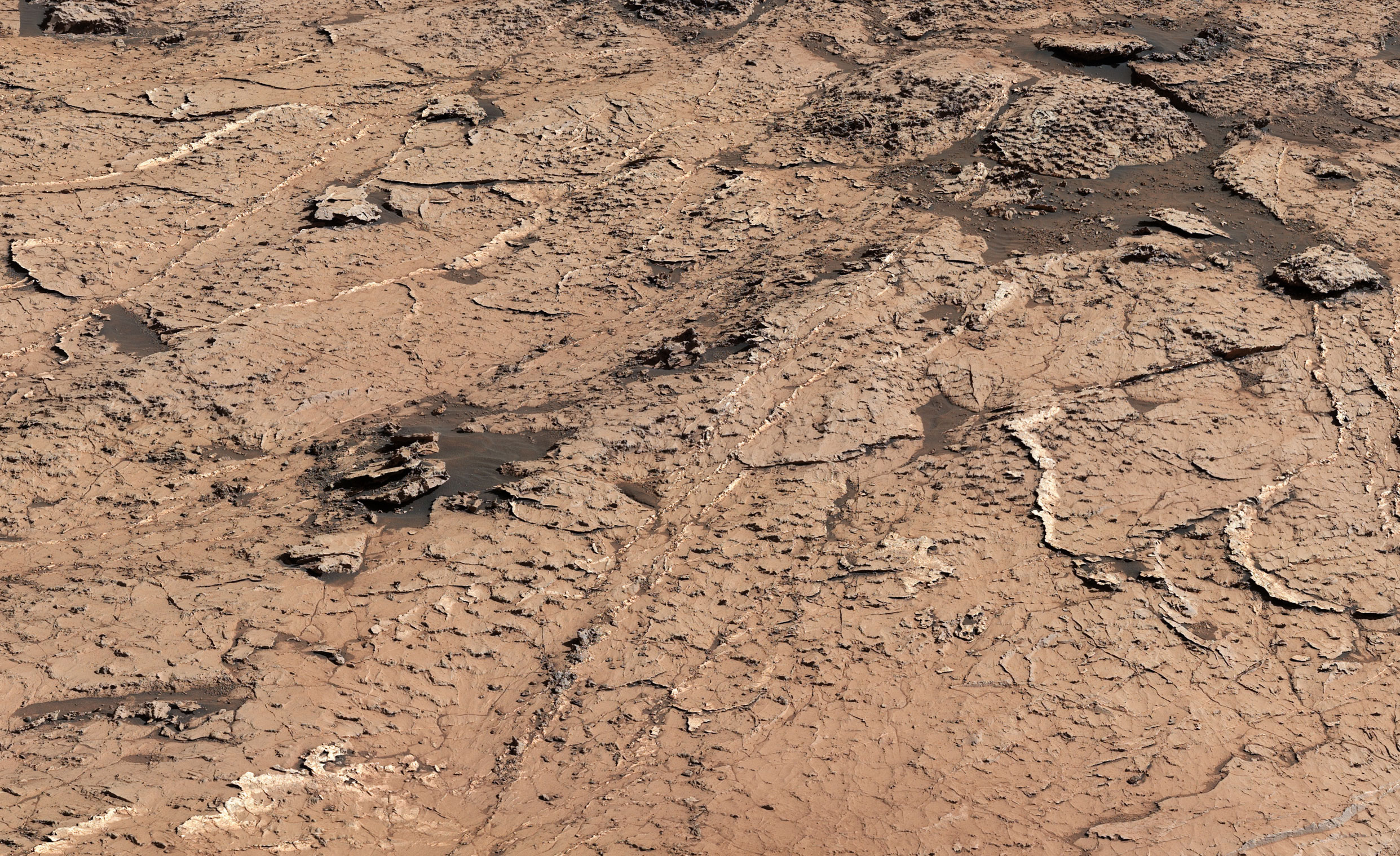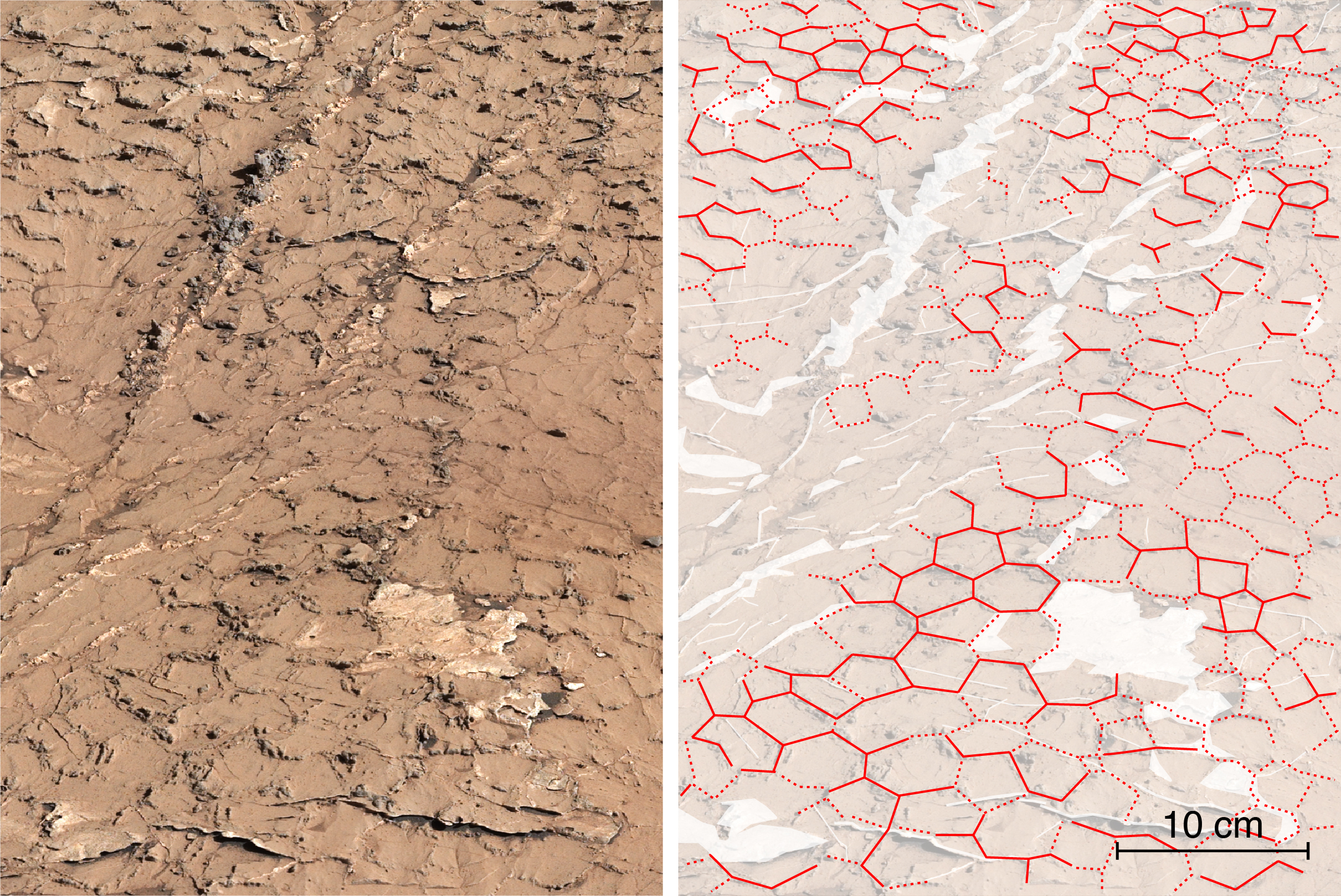The possibility of extraterrestrial life gains momentum as Nasa uncovers compelling evidence pointing towards potentially habitable conditions on Mars.
Recent findings by the Curiosity Rover have unveiled traces of seasonal wet-dry cycles that occurred on the red planet approximately 3.6 billion years ago.
These findings hint at a bygone era when Mars may have been hospitable to various life forms.
Distinctive patterns of well-preserved ancient mud cracks, adorning the Martian landscape, offer insights into the planet’s past climatic shifts.
The hexagonal motifs etched into these mud cracks provide the earliest known indicators of cyclic wet-dry episodes on early Mars, resembling the climate patterns conducive to prebiotic evolution akin to Earth.

When moisture recedes, T-shaped intersections manifest within the mud, a phenomenon previously observed by Curiosity in the “Old Soaker,” a network of fractures etched into a Martian rock slab on Mount Sharp.
In 2021, while traversing uncharted ridges, Curiosity chanced upon these mud cracks, ultimately extracting a sample from a rock formation affectionately dubbed “Pontours.”
These seasonal wet-dry fluctuations play a vital role in influencing the concentration of chemicals instrumental in the reactions fostering the creation of polymers. These polymers, in turn, serve as a potential substrate for the chemical processes underlying Martian life.
William Rapin, affiliated with France’s Institut de Recherche en Astrophysique et Planétologie, expounds on the significance of these discoveries: “The emergence of these particular mud cracks coincides with recurrent wet-dry conditions, conceivably corresponding to seasonal variations. This marks the inaugural concrete proof that Mars’ ancient climate underwent periodic wet-dry oscillations akin to Earth.”

However, the implications of these observations extend beyond climatic nuances. The revelation of wet-dry patterns holds the potential to catalyze molecular evolution, a phenomenon indispensable for the emergence of life forms.
Rapin elaborates, underscoring the significance: “Notably, wet-dry cycles play a pivotal role, potentially even constituting prerequisites, in the molecular evolution that might serve as a stepping stone towards life.”
In a cosmos brimming with possibilities, Nasa’s insights into the Martian past fuel anticipation and intrigue, invoking contemplation on the prospects of life beyond our terrestrial realm.






